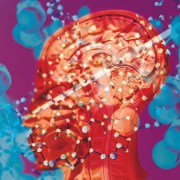 Photo: Getty Images
Photo: Getty Images
About 5 percent of people have a brain aneurysm, in which the wall of the blood vessel is weakened and either bulges or balloons out, according to MedlinePlus. The weakening of the blood vessel’s wall can occur because of conditions present at birth or factors developed later in life.
For many people, a cerebral aneurysm does not cause symptoms or rupture. But if an aneurysm in the brain is large enough and puts pressure on nearby nerves or brain tissue, patients can have symptoms. Symptoms may also occur if the brain aneurysm leaks or ruptures.
If a brain aneurysm does rupture, bleeding in the brain, or a hemorrhagic stroke, occurs, which is life-threatening. The MayoClinic.com noted that in most cases, the ruptured brain aneurysm occurs in an area between the brain and the tissue that covers the brain, a condition called a subarachnoid hemorrhage.
Diagnosing a Brain Aneurysm
To diagnose a brain aneurysm, a physician may use several exams. Brain scans may be used to determine where in the brain the aneurysm is located. These may include a CT scan or MRI. Another option is a cerebral angiography, which detects how blood flows in the person’s brain, which can help the physician figure out where the cerebral aneurysm is and how big it is.
The physician may order an electroencephalogram (EEG), which maps the brain’s electrical activity. If the patient has symptoms of a ruptured aneurysm but a brain scan does not show bleeding, the physician may order a cerebrospinal fluid test, which can detect red blood cells in the cerebrospinal fluid, which surrounds the brain and spinal cord.
Treatments for a Brain Aneurysm
If the physician determines that the patient has an aneurysm in the brain, the next step will be choosing the appropriate treatment. If the cerebral aneurysm is small, such as smaller than 3 mm, the physician may recommend waiting for surgery, as it is less likely to rupture, according to MedlinePlus. But even if a patient is not having symptoms, the physician may recommend treatment to prevent a life-threatening rupture later.
Surgical Options to Repair a Brain Aneurysm
If the brain aneurysm has ruptured, the patient will undergo surgery. Two options are available: surgical clipping and endovascular coiling. With surgical clipping, the neurosurgeon accesses the brain through a craniotomy. Then, the neurosurgeon locates the blood vessel and places a metal clip at the aneurysm’s base, which prevents blood flow.
The second option, endovascular coiling, is less invasive: the surgeon inserts a catheter into an artery in the groin and guides it up to the aneurysm in the brain. Once at the cerebral aneurysm, thin metal wires are put in, which coil up and disrupt blood flow, resulting in blood clot formation.
Surgical clipping and endovascular coiling can both be used on unruptured brain aneurysms to prevent a future rupture. Both of these surgical options have side effects, including a loss of blow flow and bleeding in the brain.
Other Treatment Options
Other treatments for a ruptured brain aneurysm involve reducing symptoms. For example, for headaches, patients may take acetaminophen. If a patient is having a seizure, she may take medications such as phenytoin, valproic acid or levetiracetam. To prevent a stroke, patients may be given intravenous injections of vasopressor or undergo an angioplasty. Other treatments include calcium channel blockers and shunt surgery.
Prognosis with a Ruptured Brain Aneurysm
The outcome of a ruptured brain aneurysm depends on the case, though many are deadly: MedlinePlus noted that 25 percent of patients die within one day, and 25 percent die within three months of the rupture.
References
MedlinePlus Medical Encyclopedia. Aneurysm in the Brain. Web. 12 December 2011
http://www.nlm.nih.gov/medlineplus/ency/article/001414.htm
MedlinePlus Medical Encyclopedia. Brain Aneurysm Repair Web. 12 December 2011
http://www.nlm.nih.gov/medlineplus/ency/article/007372.htm
MayoClinic.com. Brain Aneurysm. Web. 12 December 2011
http://www.mayoclinic.com/health/brain-aneurysm/DS00582/METHOD=print
National Institute of Neurological Disorders and Stroke. Cerebral Aneurysms Information Page. Web. 12 December 2011
http://www.ninds.nih.gov/disorders/cerebral_aneurysm/cerebral_aneurysms.htm
Reviewed December 12, 2011
by Michele Blacksberg RN
Edited by Jody Smith



Add a CommentComments
There are no comments yet. Be the first one and get the conversation started!